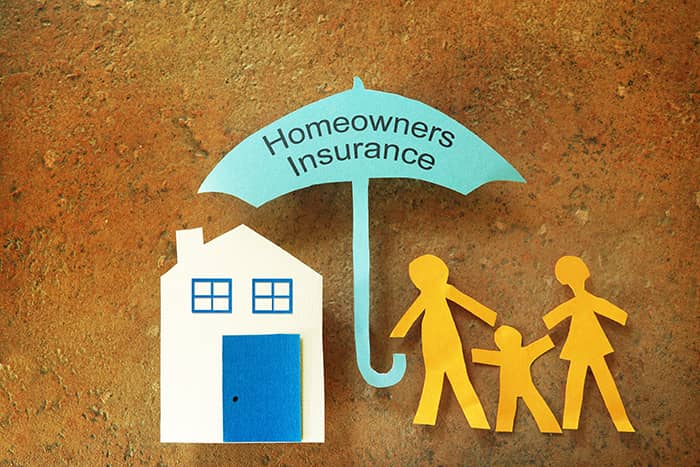Homeowners insurance is something that the majority of Americans are required to get when buying a house. The majority of personal property and structural damage brought on by fires, natural catastrophes, and other events beyond your control are normally covered by homeowners insurance, but it is not comprehensive. Know what is covered by your insurance policy to prevent having to pay for expensive damage. To find out what is and isn’t covered by homeowners insurance as well as what you can do about things that aren’t covered. We spoke to a few homeowners insurance agents.
The Different Types of Homeowners Insurance Coverage Limitations
The things that a house insurance policy will cover depend on the sort of policy you purchase, the location, age, and the condition of the home you’re buying. As the insurance provider providing the coverage. In addition to your loss history, coverage also depends on the loss history of the property you’re purchasing.
Two fundamental types of policies—HO-3 and HO-5—make up the great majority of the personal insurance market. The insurance provider you select will then present various alternatives and coverage levels. The most typical single-family house insurance plan, known as HO-3, is frequently referred to as “basic” homeowners insurance. Named hazards are the exact opposite. If there is anything you don’t understand about the policy, go over it again and ask your house insurance provider.
This is What Homeowners Insurance Does Not Cover
The places where you can receive coverage for the 10 things that house insurance doesn’t cover are listed below.
1. Flood Damage
Flood damage is one of the most expensive occurrences that is not covered by a house insurance policy. In general, a flood is defined as the incursion of surface water from outside the walls of your property. You must review the policy to determine how it defines the term, though. Surface water and the exterior of your home are important concepts.
Consider that on the day you leave for a ten-day vacation, the water pipe to your refrigerator breaks. For ten days without interruption, water leaks onto your floor. This is a claim for water damage, not flood damage. It is covered since this is not surface water and it did not come from the outside of your house.
2. Mold
Because it can be challenging to pinpoint the underlying cause of a mold problem, homeowners insurance for mold is tricky. Your insurer must determine that the mold’s origin was unexpected, accidental, and related to a problem covered by your insurance in order for the damage to be reimbursed. However, if a sudden plumbing leak is what caused the mold, your insurance plan can pay for the repairs as long as you act quickly to correct the issue. Mold can cause a bad smell that can cause the homeowner to run for the hills.
3. Nuclear Hazard
Nuclear accidents are not covered by home insurance. Fortunately, you probably won’t need it. If you reside in the hazard’s impacted region, nuclear power firms are required to carry liability insurance to cover damages.
4. Neglect
In the context of home insurance, this refers to your failure to take any reasonably foreseeable steps to protect your property from harm. In other words, basic maintenance issues, evident and avoidable leaks, and wear and tear are typically not covered by homeowners insurance. Consider a kitchen sink line that slowly leaks over several weeks or months, causing floors and fixture wood to decay. Your insurer would probably be able to use the neglect exclusion to reject a claim if one came in.
5. War
Your home insurance coverage does not cover damage brought on by a conflict of any kind, including civil war, nuclear war, declared or undeclared war, or a fascist revolt on the nation’s capital.
6. Fire
Home fires are among the most frequent sources of property damage, and practically all homeowners insurance policies provide protection for buildings and possessions from them. Most common fire insurance policies also cover the cost of additional living expenditures, such as hotel stays, rental costs, or food and restaurant bills, if a home is completely damaged by fire. With the rise of electric cars and home electric car charging there has been a rise in bad electric installation fires.
7. Vandalism
Unless specifically excluded, vandalism is often covered by all-risks or all-perils insurance. Homes that are uninhabited for a predetermined amount of time are not covered by vandalism coverage. An unoccupied home is one that still has the policy owner’s personal belongings. Inside of it even though they are not present.
A vacant residence is unoccupied and clear of the owner’s belongings. This may happen, for instance, if you were selling your house and left, taking all of your possessions and furnishings with you. Your policy’s vandalism coverage would expire after a predetermined amount of time.
8. Pets
Dog bites and other dog-related injuries accounted for more than $500 million in homeowners insurance liability claims paid out in 2014, or more than one-third of all homeowners insurance claims, according to the Insurance Information Institute. While most pet-related accidents are covered by homeowners insurance. Some contracts specifically exclude incidents involving “high-risk” breeds like pit bulls or German shepherds. To ensure that the breed of your dog won’t affect your coverage, check with your agent.
9. Trampolines
Similar to trampolines, which most insurance companies refer to as a liability despite the fact that youngsters think they’re great for the backyard. Nearly 92,000 emergency department visits per year are attributed to trampoline-related injuries, according to the U.S. Consumer Product Safety Commission. Some homeowner’s insurance policies do not cover trampolines at all, which means that your insurance provider is not responsible for any claims made if you, your children, or any other neighborhood children are hurt while using the trampoline. A trampoline might even prevent your current policy from being renewed. Read your policy’s fine language before acquiring or installing a trampoline or any other piece of “high-risk” playground equipment.
10. Termites
The National Pest Management Association estimates that termites damage American homes to the tune of $5 billion annually, none of which is covered by homeowner’s insurance. Even though a pest control company may occasionally be able to provide services like termite coverage, it is far preferable to take precautions to avoid the issue. To prevent these pests from entering your property, prune back trees, maintain a sturdy roof, and minimize ice dams brought on by snow accumulation. Make an appointment with a pest control expert for a routine examination if your home is susceptible to termites.






